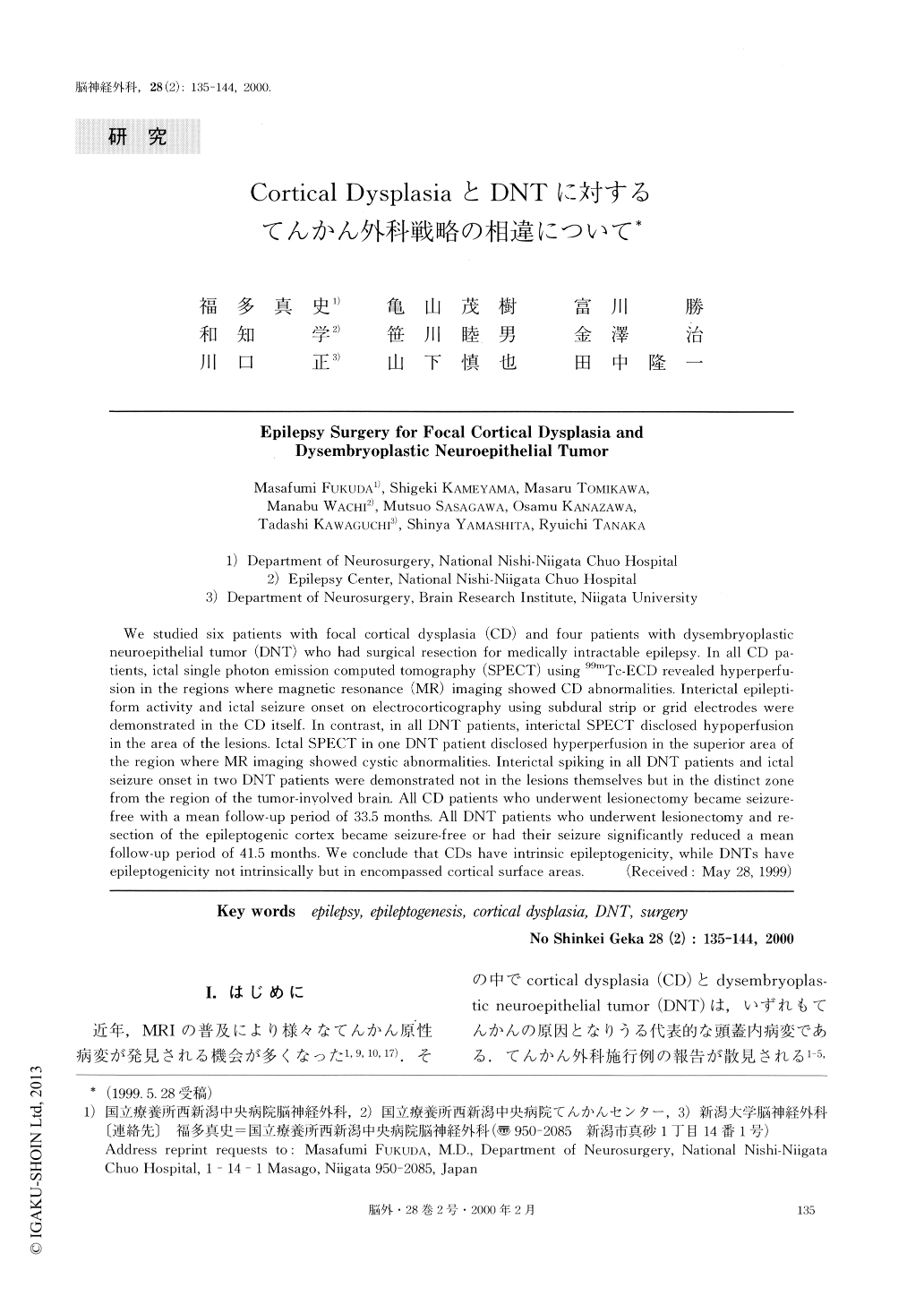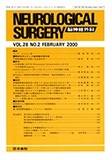Japanese
English
- 有料閲覧
- Abstract 文献概要
- 1ページ目 Look Inside
I.はじめに
近年,MRIの普及により様々なてんかん原性病変が発見される機会が多くなった1,9,10,17).その中でcortical dysplasia(CD)とdysembryoplas-tic neuroepithelial tumor(DNT)は,いずれもてんかんの原因となりうる代表的な頭蓋内病変である.てんかん外科施行例の報告が散見される1-5,8-13,17,18,20).このような頭蓋内病変を有するてんかん症例に対して発作抑制の目的で手術を施行する場合,その切除方法としては病変部のみを切除する方法,病変部周囲の発作焦点のみを切除する方法,病変部と周囲の発作焦点の両方を切除する方法の3つに主に分類される.いずれの方法を選択するかはその病変の持つてんかん原性との関わりに依存する.われわれは難治性てんかんの原因となったこの2つの頭蓋内病変の症例に対しててんかん外科を施行した症例を後方視的に分析し,異なる病変が有するてんかん原性と手術戦略の相違について考察を加えたので報告する.
We studied six patients with focal cortical dysplasia (CD) and four patients with dysembryoplastic neuroepithelial tumor (DNT) who had surgical resection for medically intractable epilepsy. In all CD pa-tients, ictal single photon emission computed tomography (SPECT) using 99mTc-ECD revealed hyperperfu-sion in the regions where magnetic resonance (MR) imaging showed CD abnormalities. Interictal epilepti-form activity and ictal seizure onset on electrocorticography using subdural strip or grid electrodes were demonstrated in the CD itself. In contrast, in all DNT patients, interictal SPECT disclosed hypoperfusion in the area of the lesions. Ictal SPECT in one DNT patient disclosed hyperperfusion in the superior area of the region where MR imaging showed cystic abnormalities. Interictal spiking in all DNT patients and ictal seizure onset in two DNT patients were demonstrated not in the lesions themselves but in the distinct zone from the region of the tumor-involved brain. All CD patients who underwent lesionectomy became seizure-free with a mean follow-up period of 33.5 months. All DNT patients who underwent lesionectomy and re-section of the epileptogenic cortex became seizure-free or had their seizure significantly reduced a mean follow-up period of 41.5 months. We conclude that CDs have intrinsic epileptogenicity, while DNTs have epileptogenicity not intrinsically but in encompassed cortical surface areas.

Copyright © 2000, Igaku-Shoin Ltd. All rights reserved.


